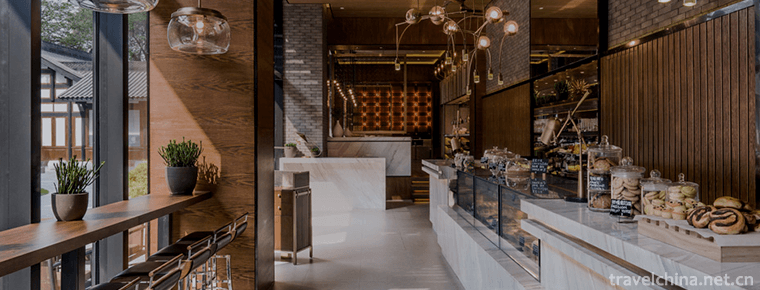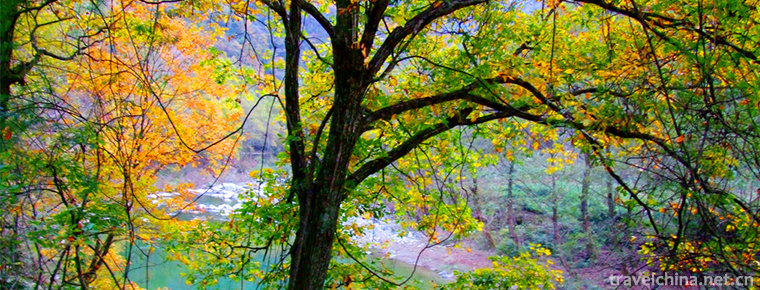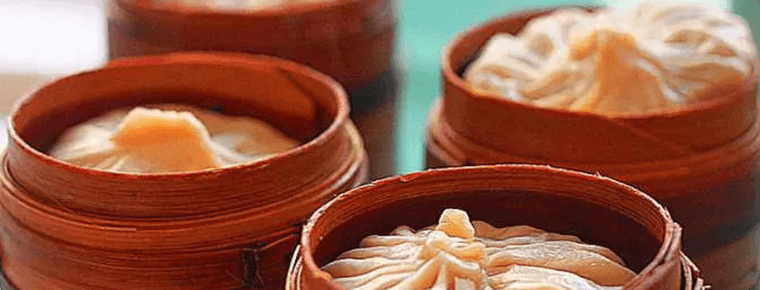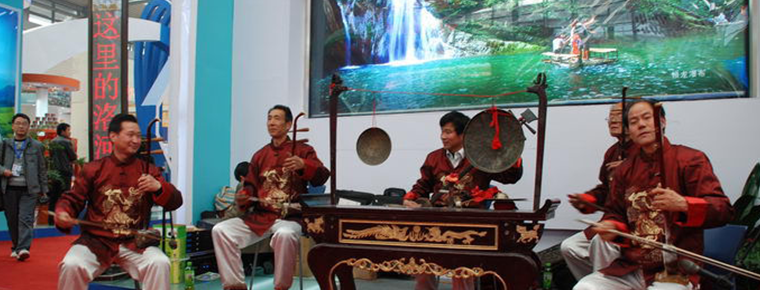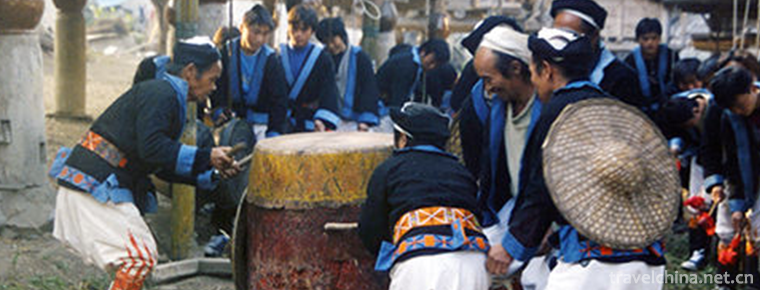Yongchun Quan
Yongchun Quan
Yongchun Quan is a traditional Chinese martial arts, a technology to stop invasion, a positive, streamlined and legitimate defense system, and the legal use of force. Compared with other traditional Chinese martial arts, they are more focused on subduing their opponents as soon as possible so as to minimize the damage caused by the parties.
Yongchun Quan is a distinctive Nanquan technique based on the theory of "midline", which emphasizes the use of correct concepts, consciousness and ways of thinking to derive the flexible application of limbs. Its contents mainly include "small ideas", "bridge-seeking" and "finger-marking". Its main practice mode is "Kunshou" practised by two people. "Kun feet" and so on; auxiliary equipment has wall sandbags, three-star stakes; training equipment has wooden stakes, knives, sticks and so on.
On November 11, 2014, the "Yongchunquan" project declared by Fuzhou City, Fujian Province, was the fourth batch of representative projects of national intangible cultural heritage . On June 8, 2017, Yongchunquan, a national non-heritage project, was formally stationed in Fujian Police Academy.
Legend of Origin
There are many legends and historical versions about the origin of Yongchun Quan. The Yongchun Quan, which has been developed so far, is essentially formed through the gradual development and perfection of the previous Yongchun teachers in the past dynasties. Although many people believe that Yongchun Quan originated from the Sichuan-Yunnan border area, was popular in Fujian, and was famous in Foshan, Guangdong Province, due to the lack of written materials, the history of Yongchun Quan only spread orally among the masses, and then the description of wild history fiction. With the passage of time, there are different opinions on the origin of Yongchun Quan, so there is no unified statement .
First, the founder of Yongchun Quan is five Shi Tai (formerly Zhu Hongmei) of Shaolin Temple in southern Shaolin of Fuqing, Fujian Province. Five Shi Tai combined Zen and Wushu, and finally created a practical Kungfu, Yongchun Quan, which is suitable for women's exercises. The name Yongchun is the crystallization of his life's erudite experience. For example, on the right side of a simple "Yong" word, the words "Yong" contain the points, crosswise, folded, vertical, hook, pick, skim and pinch, which implies the theory and tactics of Yongchun Quan.
Sayings 2: It is related to the burning of Shaolin Temple in Qing Dynasty. At that time, South Shaolin in Putian, Fujian, was encircled and suppressed for secretly "fighting against the Qing Dynasty and restoring the Ming Dynasty". The ancient temple in Shaolin was also burned to ruins by officers and soldiers. Only five top masters ("five old Shaolins") escaped, one of them being five divisions. On the basis of Hequan in Southern Shaolin, she created a set of more skilled boxing techniques and passed them on to Yan Er and Yan Yongchun's father and daughter. Yan Yongchun further developed this kind of boxing, later known as "Yongchun Quan" .
Say three: Yan Yongchun, Quanzhou, Fujian Province, is aware of the fighting between snakes and cranes. He created it by himself by combining Yongchun boxing and Shaolin fighting techniques.
Speech 4: After the five creative Yongchun Quan, it was not passed directly to Yan Yongchun, but to Miaoshun, a Shaolin disciple, Yan 2, a Shaolin secular disciple, and Yan 2, his daughter Yongchun and son-in-law Liang Fuli .
Fifth, the compilation of Yongchun Quan has nothing to do with five Shitai or Yan Yongchun, and there is no competition between snakes and cranes. The predecessor of Yongchun Quan should be Yongchun Quan, a kind of fighting martial arts of the anti-Qing organization "Tiandi Hui" in the early Qing Dynasty, which was created by the master of Dust House of Shaolin disciples in Songshan, Henan Province. He (or she) first passed on to Zhang Wu, a martial arts student of the Tingkun Opera Troupe, who is known as the "Show Five" and is said to have the reputation of "a Show Five" walking alone in Wulin. Zhang Wu later came to Guangdong in distress and settled in the "Qionghua Club Hall" at the tail of Foshan Town, Nanhai County, and then spread Yongchun Quan to the disciples of Guangdong Opera circle. During the uprising of Li Wenmao in later Xianfeng years, disciples changed the word "Yong Chun Quan" to "Yong" and "Swimming" in order to avoid disaster. Huang Baohua, Liang Erdi, Dahua Mian Jin and others in the Red Ship learned this fist and passed it on to Liang Zan, who runs a Chinese medicine store and practises medicine on Chopsticks Road in Foshan. Since then, Liang Zan has carried forward Yongchun fist.
Fact 6: Yongchun Quan should be Yongchun Quan. It was named Yongchun Temple in Quanzhou, Fujian Province. It was the Southern Inner Quan method learned by those who entered the temple. It was called Yongchun in Shaolin. The general teaching was the best Zen master of Shaolin disciples. Southern Shaolin was burned and the best fled to Foshan, once hiding in the red boat of Cantonese opera. Later, because of the uneven display of Xingzang in Dongguan, the theatre troupes worshipped him as a teacher in succession. Among the disciples were Su Sanniang, a Huizhou native, who was known as the "Yongchun Sanniang" because of her excellent knowledge of Huadan in the opera troupe. Huang Huabao, Liang Erdi and others in the red boat were handed down by the latter three women, and Liang Zan in Foshan was also handed down by Huang and Liang, so that Yongchun Quan could be carried forward in Foshan .
Development and Inheritance
After Huang Huabao imparted Yongchun boxing skills to Liang Erdi, a good friend of the theatre troupe, Liang Erdi also imparted boxing skills to Liang Zan, a native of Gulao Township in Heshan County. On the occasion of Huang Huabao's fiftieth birthday, Liang Erdi took Tu Liang Zan to celebrate his birthday, so Liang Zan met Huang Huabao. Huang Huabao appreciated Liang and took Liang Zan as a closed disciple.
Mr. Liang Zan (Zan) felt that Yongchun Quan was the best way in terms of legal strength, body shape and technique since he practiced Yongchun with Hua Bao. Liang Zan received apprenticeship and taught boxing in Zansheng Hall from 1870 to 1890, and reorganized what he had learned all his life. However, Liang Zan did not publicly teach apprentices. He always practiced medicine. Because of the shop business, he only received a few closed-door disciples and failed to widely teach them. Therefore, Yongchun Quan did not flourish for a while. Besides Liang Chun and Liang Bi, Chen Huashun is the only one who can get his true biography. After Liang Zan was over sixty years old, Liang Bi and Liang Chun had jobs or left Foshan. They could not take over their father's business. Instead, they transferred Zan Sheng Tang to others and renamed it Xingji Tang. Liang Zan retired and returned to Gulao Town.
Chen Huashun (Hua Gong) often passes through Zan Sheng Tang because he is looking for money. Because he knows Liang Zan's fighting deeds in Foshan, he often peeks at self-study from the crack in the door. Finally, at the age of 39, he followed Liang Zan, who was 62 years old, to learn Yongchun Quan. After Liang Zan's death, Chen Huashun (after 1901) taught Yongchun Quan in Guanwadian, Lianhuadi Street. However, Yong Chun's method of giving boxing is different from that of Shaolin boxing. Because it needs long-term practice, and the best method of passing the hand needs to be taught by individual professors, so Chen Huashun is not allowed to teach more. Therefore, Chen Huashun's fee is quite high, so he can not be afforded by the general public, and most scholars are your father-in-law. At that time, he was known as "Master's Boxing". Therefore, it has not been widely circulated. From 1901 to 1907, Chen Huashun taught boxing to 16 people. Those who can acquire Chen Huashun's skills are Wu Zhongsu, He Hanluan, Lei Ruji, his son Chen Rumian and his disciple Ye Wen.
When Chen Rumian was 8 years old, he began to practice Yongchun Quan with his father Chen Huashun. Because of his immersion in his childhood and years of hard work, Chen Rumian soon had a fairly solid foundation. After the completion of the technique, the "Chen's ancestral temple" in Benxiang, Foshan, opened a medical, martial arts hall apprenticeship and treatment of falls and injuries. Because boxing comes from his father, there are many skilled seekers. In addition to Chen Jiaxin and Chen Jialian, the famous Yongchun teacher District Kang and Zhao Ji are all out of his door. After 1932, Chen Rumian set up a museum in Wuzhou, Guangxi, hanging a plaque on the day of "Chen Guan in Buddha Town", and then widely accepted his disciples in Guixian. His boxing skills were praised, when they were called "Chen Rumian in Guangzhou and Guangzhou".
Wu Zhongsu became friends with Chen Huashun because he needed to change money for his work and often financed Chen. Subsequently (after 1901), Wu Fu delivered the cylinder tile shop to Chen Huashun, and entrusted Zhong Su and his brother Xiaolu to Chen Huashun. In order to thank his father, Chen Huashun cared for them and at the same time passed on his kungfu. They became Chen Huashun's two first disciples, so they were called Wu Zhongsu's two elder brothers. After that, Chen Huashun formally began to teach apprentices in the shop. Wu Zhongsu, after years of hard training and great skill, became a true biographer of Chen Huashun's clothes and bowls, and taught boxing on behalf of his younger brother Ye Wen. In the early years of the Republic of China, Wu Zhongsu opened a martial arts hall in Gulutou Street. Most of his children were wealthy. For example, he Zhaochu, a famous doctor named Li Shoupeng, Zhang Shengruo, a hardware store named Dayi, Li Zhongshengtang Shaodong Li Zhihao, and Liang Fuchu, a treasurer of Yingju Tea House. At that time, Ruan Qishan, Yao Cai and Ye Wen, three famous "Yongchun Sanxiong" in Foshan, often went to their martial arts hall to receive their advice and discuss boxing skills.
Ruan Qishan loved martial arts since childhood. His father paid a lot of money to recruit Guo Baoquan, Feng Shaoqing, the famous Yongchun martial arts master, as his brother Ruan Jiyun and Professor Ruan Qishan. Especially with the achievements of Ruan Qishan, who was called "Ruan Laohu of Foshan", he knows how to integrate scientifically in his practice of boxing, and he holds Yongchunmen's skills such as boxing, stakes, knives and sticks in one body, and Ye Wen and Yao Cai are known as "Yongchun Sanxiong". In his lifetime, he only passed on his skills to his close friend Zhang Baoai, his disciple Cen Neng, and his registered disciple Huang Jing.
Yao Cai was fond of martial arts since his childhood. He learned Yongchun Quan under Bairuan Jiyunmen. After ten years of hard training, he achieved great success in martial arts. Later, his teacher, Ruan Jiyun, taught Yongchun Quan to Annan (Vietnam). He appreciated Yao as a good material for martial arts training. So he led Yao to Wu Zhongsu Martial Arts Hall for further study. At that time, Ruan Qishan and Ye Wen also often consulted Wuwu Martial Arts Hall. They often exchanged and consulted with each other. Guo Baoquan once went to Foshan. Besides Yao Cai's son, his disciples included Gao Man, Yao Xi, Yao Qi and his disciples. Huo Chao, Lin Ruibo, Wu Riming, etc.
Astragalus leaf
At that time, Chen Huashun, a disciple of Liang Zan, the master of Yongchun boxing in Foshan, rented Ye Wen's ancestral temple to set up an apprenticeship hall. Ye Wen had the honor of learning Yongchun boxing as a teacher because he was young and weak. Chen Huashun often teaches in person because of his brilliance and diligence, while Wu Zhongsu assists and often points out the mysteries of Yongchun Quan one by one with Ye Wen. Ye Wen makes great progress in martial arts. After Chen Huashun died of stroke, Ye Wen trained hard with Wu Zhongsu for three years, making greater progress than before, only 15 years old. The following year, Ye Wen came to Hong Kong to study at St. Stephen's School on his father's orders. During this period, he was introduced by his classmates to know Mr. Liang Bi, the son of Mr. Liang Zan, and practiced Yongchun Quan with him. In 1949, the 57-year-old Ye Wen left Foshan to settle in Hong Kong. Over the next 20 years, he has set up halls and apprenticeships in Hong Kong and Kowloon Hotel Staff Union, Ruzhou Street in Kowloon, Li Zhengwu Village and Tongcai Street. Ye Wen is very prestigious in the society and in the martial arts circle. He practices martial arts with all walks of life, including many foreign students. In 1971, disciples of Ye Wen set up the Yongchun Sports Club, which integrates teaching, researching and exchanging Yongchun Quan as a whole, and as a center, spread Yongchun to the world. Ye's disciples came into being in large numbers, especially Bruce Lee, who enjoyed the prestige of the world with his extraordinary Chinese kungfu.
Bruce Lee studied Yongchun Boxing at the age of 18. After graduation, he opened "Zhenfan National Art Museum" in Seattle to teach Chinese Wushu. During the period, he carefully studied and absorbed the essence of Chinese and foreign martial arts, creating Jeet kune do. In 1971, he returned to Hong Kong to work in the film and television industry and made many Chinese Kung Fu movies which made a great sensation in the world. He was known as the "King of Kung Fu". His Foshan Yongchun Quan, which he learned in his early years, was also very popular all over the world.
On June 8, 2017, Yongchunquan Fujian Police Academy's inheritance demonstration base was unveiled, which marked the official stationing of Yongchunquan in Fujian Police Academy as a national "non-legacy" project.

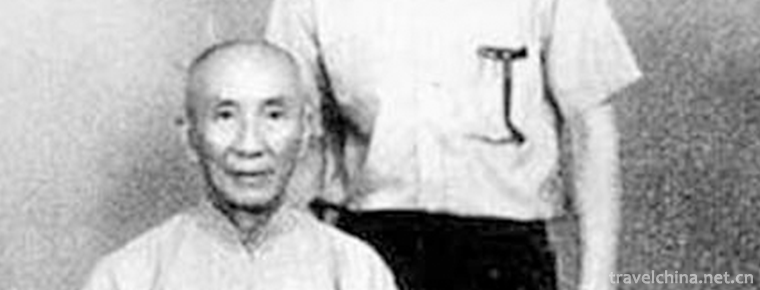
-
The Temple House Bo she Hotel
Located in Chengdu, the Bosch is a luxury hotel with a unique style, which combines the beauty of traditional and modern design. The shape design is charming and energetic, reflecting the city's legen.
Views: 268 Time 2018-12-16 -
Yangba Subtropical Ecotourism Scenic Area
Yangba subtropical eco-tourism scenic spot is located in Yangba Town, south of Kangxian Town, Longnan City, Gansu Province, 84 kilometers away from the county town.
Views: 172 Time 2019-03-02 -
tea and pastries making skills
Tea making skills, Yangzhou City, Jiangsu Province, local traditional handicraft, one of the national intangible cultural heritage..
Views: 154 Time 2019-04-15 -
Legend of windbreak
Fangfeng legend is a folk legend in Zhejiang Province. Between Fengshan and Yushan, Sanhe Township of Deqing, Huzhou, Zhejiang Province, the area of Xiazhu Lake is the largest wetland.
Views: 188 Time 2019-04-29 -
Luonan Jing Blackboard
In 2011, Luonan Jingbanshu was approved by the State Council and listed in the third batch of national intangible cultural heritage list. As early as in the Daoguang period of the Qing Dynasty (around.
Views: 133 Time 2019-05-15 -
Legend of Camel Spring
Camel Spring is a provincial key cultural relic protection unit and a patriotic education base. Located in Jiezi Township Unity Village, with convenient transportation and direct access to tertiary oi.
Views: 142 Time 2019-05-15 -
Monkey Drum Encouragement of Yao Nationality
"Monkey Drum Dance of Yao Nationality" is called "Jiuglang" in Yao language. It is popular among Baiku Yao people in Yaoshan. "Monkey Drum Encouragement" is performed in .
Views: 125 Time 2019-07-11 -
Capital Institute of Physical Education
Capital Institute of Physical Education is a sports class in Beijing. Ordinary universities Located on Beijing City Haidian District, West Zhongguancun Science Park District, east of Yan Mu scenic are.
Views: 328 Time 2019-11-24 -
Daofu steamed bun with beef and mutton
Steamed bun with beef and mutton is a special traditional delicious food of Hui nationality. It is famous at home and abroad for its strict selection of materials, cooking essence, rich nutrition and mellow taste. The eating method of beef and mutton steamed .
Views: 348 Time 2020-12-06 -
Four famous Chinese embroidery
Suzhou embroidery is famous for its fine stitches, elegant colors and fine embroidery. It has the characteristics of flat, light, even, harmonious, fine and dense. The theme is mainly about small animals. Such as "cat play", "wind through flowers",.
Views: 316 Time 2020-12-12 -
Deyang first industry
In 2018, the sown area of crops in Deyang City was 477000 hectares, 533 hectares less than the previous year, a decrease of 0.1%. Among them, the sown area of grain crops was 311000 ha, decreased by 1525 ha, decreased by 0.5%; the sown area of oil .
Views: 125 Time 2020-12-14 -
Leshan water resources
There are many rivers in Leshan City, including Minjiang River, Dadu River, Qingyi River and many small and medium-sized rivers. It is a water rich area with an average annual water production of 11.37 billion cubic meters. With 74.14 billion cubic meters .
Views: 54 Time 2020-12-17
